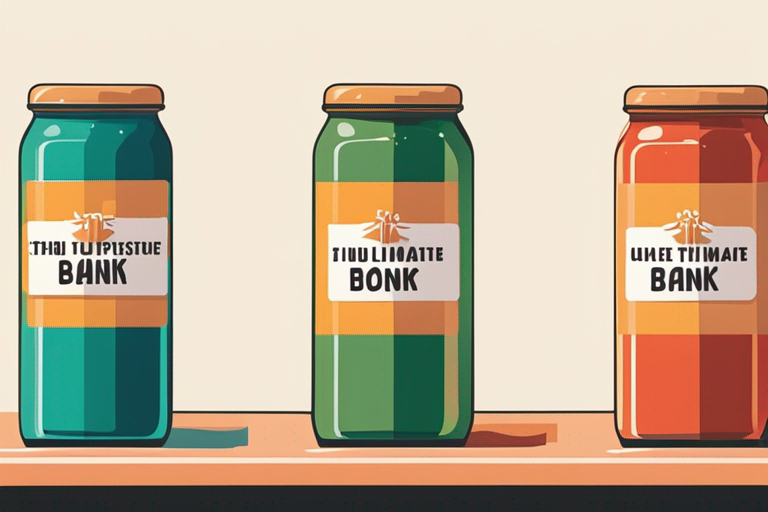
The Ultimate Guide to Food Bank Listings
Get Your Free Food Safety Cheat Sheet
30 most common foods with instant answers. Print it and stick it on your fridge—completely free!
The Ultimate Guide to Food Bank Listings
In times of need, food banks play a crucial role in supporting individuals and families facing food insecurity. These community-driven organizations provide essential food items to those in need, acting as a vital resource for combating hunger. If you or someone you know is in need of food assistance, understanding how to access food banks and their listings is essential. In this guide, we will delve into the world of food bank listings, offering valuable information on how to find and access these resources.
Why Food Banks Matter
Food banks serve as a lifeline for many individuals and families who struggle to put food on the table due to financial constraints or other challenges. These organizations collect, store, and distribute food donations to those in need, ensuring that nutritious meals are accessible to all. Here are some key reasons why food banks matter:
1. Addressing Food Insecurity
Food banks play a crucial role in addressing food insecurity by providing essential food items to individuals and families facing hunger.
2. Supporting Communities
Food banks rely on community support through donations and volunteer efforts, fostering a sense of unity and solidarity within neighborhoods.
3. Promoting Nutritious Eating
By offering a variety of nutritious food items, food banks help promote healthy eating habits among those in need.
4. Providing Emergency Assistance
During times of crisis or financial hardship, food banks offer emergency assistance, ensuring that no one goes hungry.
How to Find Food Bank Listings
Finding a food bank in your area is the first step towards accessing much-needed food assistance. Here are some practical tips on how to locate food bank listings:
1. Online Directories
Utilize online directories such as Feeding America's Food Bank Locator or the USDA's Find Your Local Food Bank tool to search for food banks in your area.
2. Community Resources
Check with local community centers, churches, or social service agencies for information on nearby food banks and their operating hours.
3. Social Media and Websites
Follow food banks on social media platforms or visit their websites for updates on services, donation drives, and volunteer opportunities.
4. Mobile Apps
Some mobile apps, such as Food Rescue US and AmpleHarvest, connect food donors with local food banks, making it easier to find and donate surplus food.
Tips for Accessing Food Banks Safely
When visiting a food bank to receive assistance, it is essential to prioritize food safety and hygiene practices. Here are some tips for accessing food banks safely:
-
Check Expiration Dates: Inspect food items for expiration dates and choose products that are within their validity period.
-
Handle Food Properly: Wash your hands before handling food items and store perishable items in the refrigerator promptly.
-
Follow Storage Guidelines: Store food items according to their storage instructions to maintain freshness and quality.
-
Practice Social Distancing: Adhere to social distancing guidelines and wear a mask when visiting the food bank to protect yourself and others.
Conclusion
Food banks play a vital role in supporting individuals and families facing food insecurity, providing essential food items and emergency assistance when needed. By understanding how to access food bank listings and following safety guidelines when receiving food assistance, you can ensure a positive and beneficial experience. Remember, no one should ever have to go hungry, and food banks are here to help those in need. If you or someone you know requires food assistance, don't hesitate to reach out to your local food bank for support. Together, we can work towards a hunger-free future for all.
Remember, everyone deserves access to nutritious food, and food banks are here to help bridge the gap between hunger and abundance. Let's join hands to support these vital community resources and ensure that no one goes hungry.

Authoritative Food Safety References
These agencies and university labs inform every tip and health precaution we publish.
USDA FoodKeeper – Cold Storage Guidelines
Official refrigerator, freezer, and pantry timelines maintained by the U.S. Department of Agriculture.
Visit USDA FoodKeeperFDA Produce Safety Rule & Grower Guidance
Field-to-fridge handling practices that prevent contamination of fruits, vegetables, and leafy greens.
Visit FDA Produce SafetyCDC Foodborne Illness Prevention Hub
Surveillance-backed guidance on pathogens, symptoms, and steps to reduce foodborne illness risk.
Visit CDC Food SafetyUC Davis Postharvest Technology Center
University research detailing optimal storage atmospheres for produce after harvest.
Visit UC Davis PostharvestPenn State Extension – Home Food Preservation & Safety
Peer-reviewed extension bulletins on safe canning, chilling, and reheating practices.
Visit Penn State ExtensionHow can I find a food bank near me?
What items can I donate to a food bank?
Can I volunteer at a food bank?
How do food banks ensure food safety?
Can I receive food assistance from a food bank?
Get Your Free Food Safety Cheat Sheet
30 most common foods with instant answers. Print it and stick it on your fridge—completely free! Want more? Upgrade to the complete guide with 70+ foods.
Scan your food directly and get instant safety info using our AI-powered camera feature.